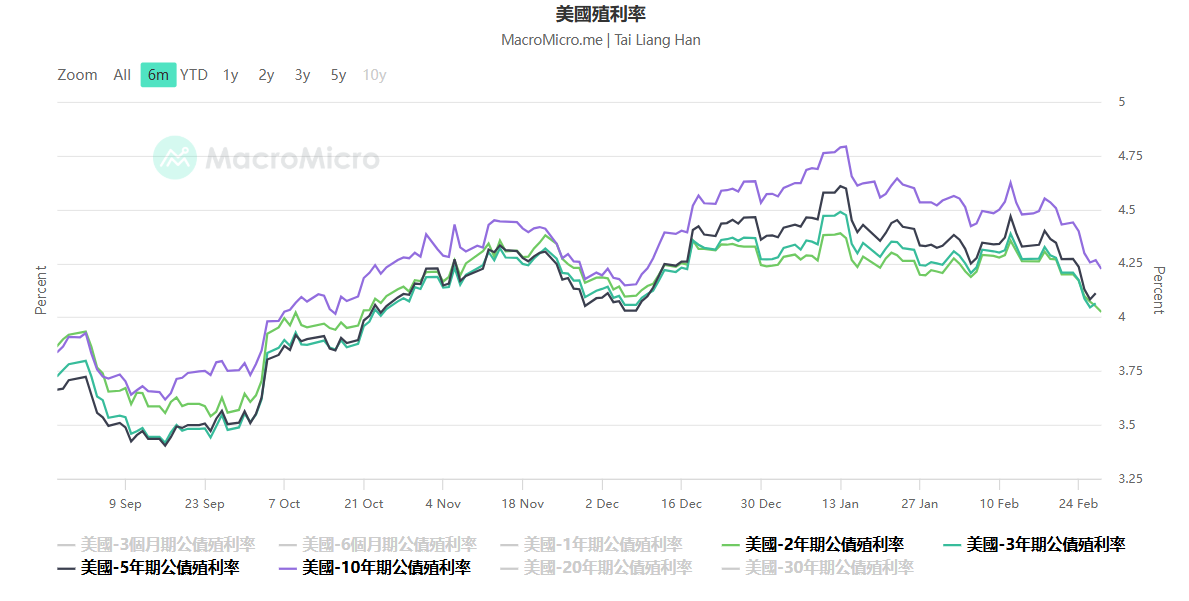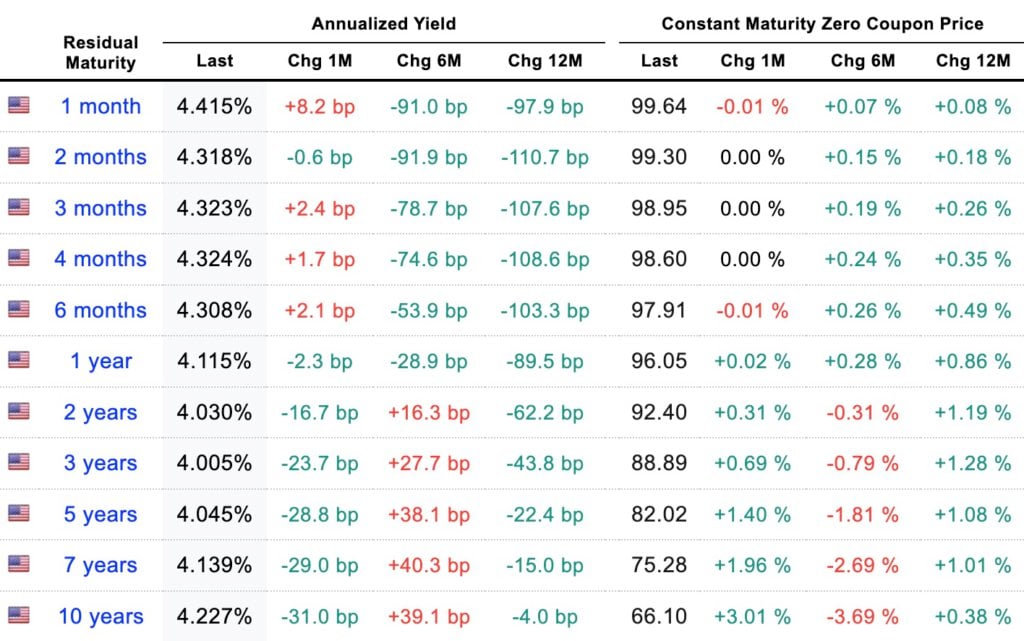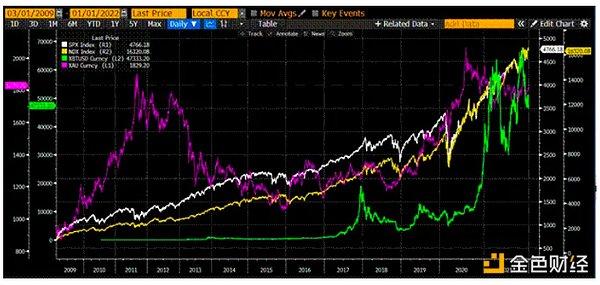US President Trump's series of economic policies and tariff decisions have made investors worry that the inflation that has just been suppressed will rebound, and even risk falling into stagflation, leading to a downward adjustment of the market's expectations for the Federal Reserve to cut interest rates and the US 10-year bond yield remaining high.
However, as the risk investment market has recently suffered a major setback, market risk aversion funds have fled to US Treasuries, and the current US 10-year bond yield has already fallen to 4.22%, a new low for the year.

Is now a good time to enter the US Treasury market?
Against this background, many investors have started to focus on US Treasuries again, discussing whether the current rise in US Treasury prices can be further bought into.
In this regard, the Morgan Stanley strategy team led by Matthew Hornbach recently pointed out that based on the current US economic situation, the US Treasury yield may further decline. (A decrease in yield means an increase in price.)
The analysts judge that although the US Federal Reserve (Fed) had previously warned at the end of last year that the pace of interest rate cuts this year would slow down, or even no interest rate cuts for the whole year, with the increase in economic uncertainties, current traders have already started betting that there may be two more 25 basis point interest rate cuts this year. In this regard, Morgan Stanley strategists pointed out that if the market expects the interest rate to drop to 3.25%, the US 10-year Treasury yield may come to the 3% range.
In addition, the US will also release the January PCE data today (28th), and Morgan Stanley expects that the January PCE data may show a slowdown in the pace of price increases, and if the Fed also releases a dovish stance, investors may further increase their bond purchases.
The US Treasury yield curve inversion reappears
It is also worth noting that the yield on long-term US Treasuries has again fallen below the yield on short-term Treasuries, a phenomenon known as yield curve inversion.
We know that the inversion of the yield curve is also seen as an important indicator for the Federal Reserve to gauge the state of the economy, and based on the experience of the past decade, whenever this phenomenon occurs, the US economy usually falls into recession shortly after the inversion is reversed.
However, the last time the yield curve inverted was in October 2022 and lasted for more than two years, setting the longest record in half a century, but the US economy did not experience a recession after the inversion was reversed, and even performed stronger relative to other countries. Therefore, whether this inversion will predict an economic recession is currently uncertain, or it may take more time to ferment.

Further reading: US Treasury Yield Curve Inversion Lasts for Over Two Years, Setting the Longest Record in Half a Century. Will the Economic Recession Scenario Repeat?






